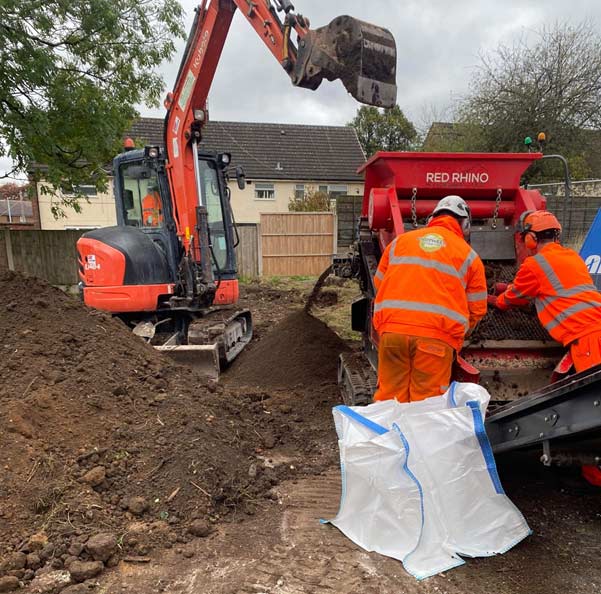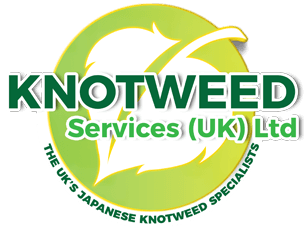JAPANESE KNOTWEED REMOVAL Herefordshire
9
LIVE KNOTWEED JOBS IN Herefordshire
189
SUCCESSFUL KNOTWEED REMOVAL PROJECTS IN Herefordshire
100%
SUCCESSFUL PROPERTY SALES AFTER TREATMENT
2
Herefordshire BASED KNOTWEED STAFF
NO OTHER JAPANESE KNOTWEED COMPANIES IN Herefordshire HAVE OUR TRACK RECORD
As one of the leading Japanese knotweed removal companies in Herefordshire, Knotweed Services specializes in removing, controlling, and treating Japanese knotweed throughout Herefordshire and England. With our dedicated surveyors working out of offices based in Herefordshire, we’re readily available and here to help.
Knotweed Services is a member of the PCA, a government-approved trade body for “the damp, waterproofing, wood preservation and invasive weeds industries.” We can be trusted to deliver effective methods for Japanese knotweed removal.
Knotweed Services has successfully controlled many large knotweed infestations in and around Herefordshire and England. For effective knotweed control to occur, thorough identification, surveying, treatment, and monitoring are necessary.
Japanese Knotweed: Advice and Solutions
Japanese Knotweed creates many problems for house owners and commercial properties. The plant makes it difficult to get a loan on or sell a property, which impacts both buyers and sellers.
If you own a commercial building or property, and Japanese knotweed is present, your project may be delayed until your infestation is being dealt with correctly and legally.
Beware of Japanese Knotweed: What it is and What to Do About It
- Japanese knotweed can grow through tarmac and concrete, posing a structural threat to your building.
- Lenders often deny mortgages against buildings affected by Japanese knotweed.
- Knotweed hinders the visibility and access to paths, highways and other infrastructure. It produces an annoying problem for commercial properties in particular.
For customers in Herefordshire with Japanese Knotweed, we should be your very first call. We’ll always ensure that the knotweed is removed in its entirety and our warranty guarantees (insurance backed guarantee available) against regrowth.



FREE IDENTIFICATION
Fill in the form below, attach your pictures and we’ll let you know if the plant in your picture is Japanese Knotweed.
Call our professionals today to start the treatment and control of your infestation in Herefordshire
Call us on: 0121 725 6348 or 0800 689 4146 for an swift estimate
The Knotweed Services team will guide you through the process from start to finish.
RESIDENTIAL JAPANESE KNOTWEED REMOVAL Herefordshire.
WHAT YOU NEED TO KNOW ABOUT JAPANESE KNOTWEED REMOVAL Herefordshire
Although Japanese knotweed infestations vary considerably from property to property, it’s common for homeowners to seek multiple methods of knotweed removal, treatment, and control.
As wild plants tend to be unpredictable, our weed control specialists assess a site’s specific factors to determine the type of treatments that will give the best results. We guarantee all our work.
— JAPANESE KNOTWEED REMOVAL OPTIONS AVAILABLE IN Herefordshire

FOLIAR SPRAYING *
Spraying of powerful chemicals with a knapsack is the most common treatment for Japanese knotweed. We ensure that other plants are not damaged when spraying, and we spray only in springtime.

FOLIAR LEAF WIPING *
With this treatment for Japanese knotweed, we use a tool to “physically wipe” our chemicals onto the plant’s leaves. Because of the accuracy of this application, we frequently allow a higher chemical concentration.

STEM INJECTION
A measured amount of herbicide is applied directly to the invading plant. This is the most ingenious way of elimination because the herbicide is injected straight into the Japanese Knotweed. Not dependant on weather conditions.

BIOMASS REDUCTION
Biomass is a type of excavation and removal, but instead of taking out all of the soil, we only take out the parts of the soil that are infected. It’s a great way to get rid of Japanese Knotweed because the soil can be used again. Using landfills less often.

CROWN REMOVAL
Crown and stems can regenerate, and even small bits of chopped crown or stem can regenerate and become a new invasive weed; removing these from the equation is a fantastic method.
— COMMERCIAL TREATMENT OPTIONS AVAILABLE IN Herefordshire

SOIL SCREENING
A tried-and-true methodology utilised on hundreds of sites across the UK.
The rhizome material of Japanese knotweed is removed from the soil material using the screening procedure. The Japanese knotweed debris is then either transferred to a licenced landfill at a significantly reduced disposal rate or burnt on site using a D6 exemption from the Environment Agency or Natural Resources Wales.
The cleaned soils can subsequently be used elsewhere, typically in soft landscaping areas where they will not interfere with construction.
This can greatly cut landfill and backfill expenses while also helping to minimise the carbon impact on site due to fewer truck travels to the dump.

BIOSECURITY SUPERVISION
Knotweed Services can provide a biosecurity operative to supervise any excavations and movement of soils containing Japanese knotweed on site.
As part of these measures, we can provide a biosecurity boot wash and machine-washing area installed in an area at the entrance to the site.
We will provide all toolbox talks for the main contractor on site, which will be signed by all contractors involved in the operation on site.
We can provide temporary geotextile barriers if required in areas to maintain the biosecurity on site.
Once the works have been completed, we will provide the client with a full biosecurity report.
This method can be used in conjunction with other treatment methods on site.

EXCAVATION AND DISPOSAL
This treatment method is ideal where time constraints are present and there’s no other option other than to remove both the Japanese Knotweed and contaminated soil to a registered landfill.
By removing all traces of the infestation quickly, this offers a rapid solution to your problem and allows your commercial project to begin groundwork’s almost straight away. When time is of the essence, there is no quicker Japanese Knotweed removal/treatment method.
Any waste taken off-site will be done so with a licensed waste carrier to a suitably authorised landfill site.

CELL BURIAL
Cell burial comprises of moving Knotweed contaminated soil from one location on site, burying it in an excavated pit which is lined with a root barrier membrane, in a different position on the site.
The burial requirements for Japanese Knotweed are as follows:
- The Environment Agency recommends that the top of the burial cell should be a minimum of 2 metres below ground level.
- The overall depth of the burial pit should be in excess of 5 metres deep. All root barrier seams are welded together forming an encapsulated cell from which the Japanese Knotweed cannot escape. Clean soil is then used to backfill on top of the cell.
- To prevent accidental disturbance of the burial site, it is recorded on all site plans and future land owners should be made aware of the location.

STOCKPILE & TREAT
Bunding is the method of relocating contaminated Japanese Knotweed soil to a different area of the site being treated. A bund is a shallow area of the contaminated soil, typically 0.5m deep.
The bund can either be raised, on top of the ground, or placed within an excavation to make the surface flush with the surrounding area.
The purpose of the bund is to move the Japanese Knotweed to an area of the site that is not used. This ‘buys time’ for treatment that would not be possible where the Japanese Knotweed was originally located.

HERBICIDE APPLICATION
At Knotweed Services we can provide the client with bespoke treatment plans depending on the locations of the Japanese knotweed.
These plans can work in conjunction with other methods of treatment where access is limited to pedestrian movements i.e., embankments or existing pathways within a site.
This will normally consist of up to 3 visits per annum to apply herbicide by either foliar spray technique or stem injection during the growing season over a period of 3 years, with a monitoring period of 2 years thereafter.
We would select the appropriate herbicides depending on the surrounding foliage or environmental constraints.
After each visit a full treatment record would be provided with photos showing the progress of the works and then an annual report.
AVAILABLE THROUGHOUT Herefordshire
- Kingsland
- Kington
- Kinnersley
- Ledbury
- Leominster
- Ross-on-Wye
- St. Weonards
- Symonds Yat
- Weobley
- Wormsley
